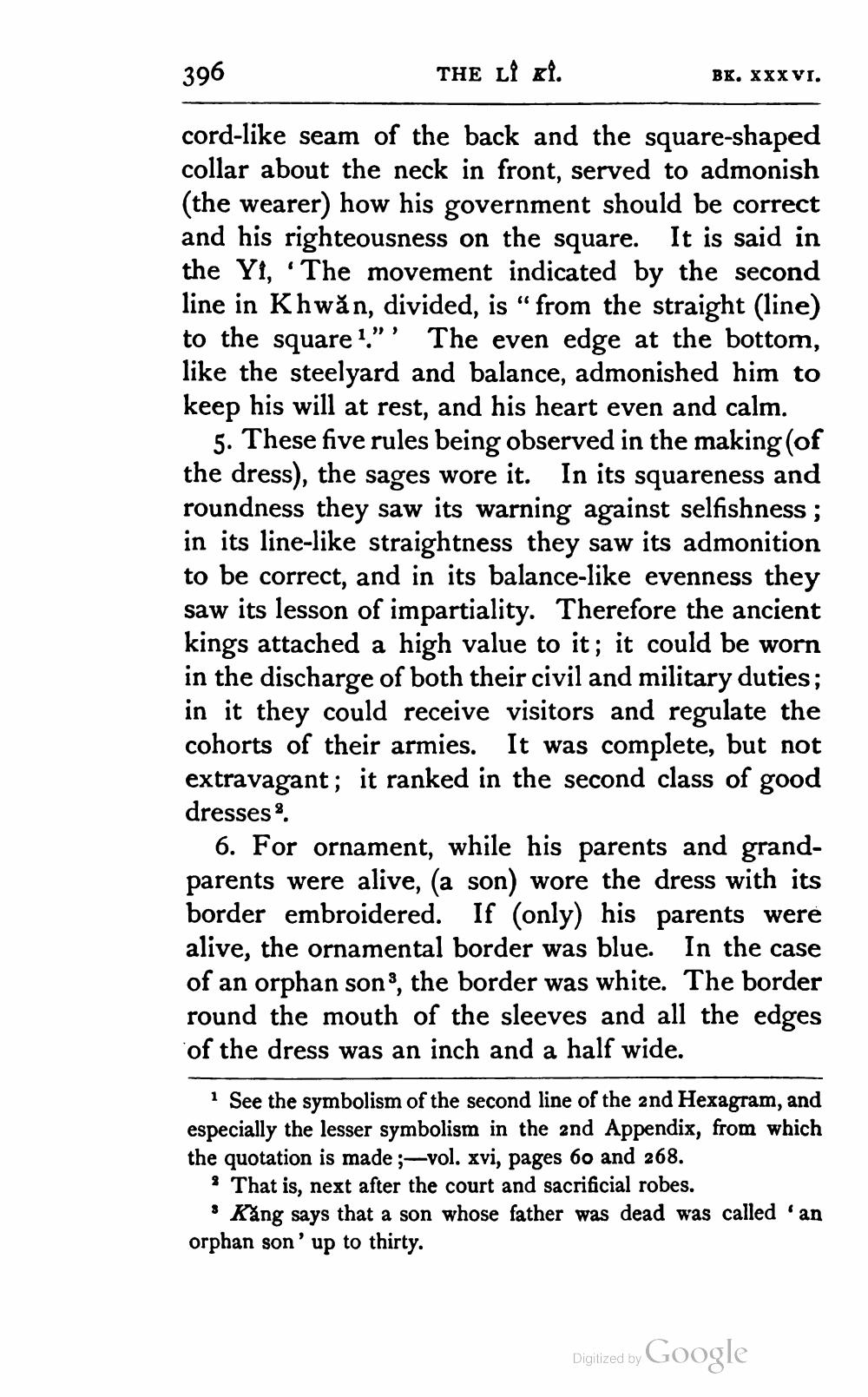________________
396
THE LÎ kl.
BK. XXXVI.
cord-like seam of the back and the square-shaped collar about the neck in front, served to admonish (the wearer) how his government should be correct and his righteousness on the square. It is said in the Yi, 'The movement indicated by the second line in Khwăn, divided, is “from the straight (line) to the square 1."! The even edge at the bottom, like the steelyard and balance, admonished him to keep his will at rest, and his heart even and calm.
5. These five rules being observed in the making (of the dress), the sages wore it. In its squareness and roundness they saw its warning against selfishness; in its line-like straightness they saw its admonition to be correct, and in its balance-like evenness they saw its lesson of impartiality. Therefore the ancient kings attached a high value to it; it could be worn in the discharge of both their civil and military duties; in it they could receive visitors and regulate the cohorts of their armies. It was complete, but not extravagant; it ranked in the second class of good dresses
6. For ornament, while his parents and grandparents were alive, (a son) wore the dress with its border embroidered. If (only) his parents were alive, the ornamental border was blue. In the case of an orphan sons, the border was white. The border round the mouth of the sleeves and all the edges of the dress was an inch and a half wide.
1 See the symbolism of the second line of the 2nd Hexagram, and especially the lesser symbolism in the 2nd Appendix, from which the quotation is made ;-vol. xvi, pages 60 and 268.
* That is, next after the court and sacrificial robes.
* Káng says that a son whose father was dead was called 'an orphan son' up to thirty.
Digitized by Google




